Similar Posts
It has been my particular honor to create a magnificent shrine and reliquary for the Russian Royal Martyrs. The shrine was commissioned by an American convert to Orthodoxy as a gift to the Hermitage of the Holy Cross, a Russian Orthodox monastery in West Virginia, USA. It was installed in time to commemorate the centenary of the tragic murder of Czar Nicholas II and his entire family, which falls on July 17th, 2018.
The donor and monastery requested a shrine that would reflect the very best of American furniture design and craftsmanship – to unite this cultural heritage with the traditional liturgical form of an icon kiot and reliquary. Since it would hold relics of royal saints it would be fitting for it to exhibit particular splendor and refinement. A second kiot was to hold a reliquary of the Optina Elders.
As a designer, I very much enjoy this problem of uniting traditions in new ways. There is no creativity in copying old solutions to longstanding needs. But to take a uniquely Orthodox piece of furniture – the icon kiot – and render it the manner of fine American furniture of the 18th century, now there is an opportunity for making something new and splendid!
I can say with some national pride that historic American furniture was the finest quality in the world, though it was certainly not the most ornate. In the 18th century, when European furniture was heavily baroque, American craftsmen maintained a sober simplicity, with curves and ornamentation used with great refinement and restraint. The beauty was in the materials. With access to the finest hardwoods in the world, and a belief that “anything worth doing is worth doing right”, American furniture was made to show off the natural beauty of wood and a craftsman’s delight in fine joinery.
I set about designing the kiots with this colonial American philosophy and aesthetic in mind: use the finest woods and show them off with a rich finish; keep the material thicknesses generous and robust; use baroque curves for grace and beauty, but keep them restrained and sober; and allow the contrast of natural materials to serve as ornamentation.
Since the kiots were meant to hold a reliquary as well as an icon, I designed them with an un-typical form – the lower half extending forward as a table. This proved most successful, as it gave architectural weight and stability to the base, and some opportunities for graceful curves.
I specified Honduran mahogany for the construction. Without stain, mahogany has a medium golden color that coordinates beautifully with icons and supports the warm liturgical aesthetic of Orthodox services. Contrasting inlay banding enlivens the key architectural lines, and inlaid details made from mother-of-pearl, ebony, and figured maple create rich ornamental highlights. The finish is polymerized tung oil varnish, hand-rubbed in ten coats.
The icons were painted in Russia by Natalia Aglitskaya, with beautiful raised gesso ornamentation in the haloes of the Royal Martyrs. I made frames for them in embossed nickel-silver basma with dark blue backgrounds, brightly highlighting the icons against the warm mahogany.
The reliquary was an interesting design challenge. There is not much precedent for wooden reliquaries, and I found that an inlaid wooden box tended naturally to look too much like a jewelry box or tea caddy. Ultimately, I decided to model the reliquary on a Roman sarcophagus – a strongly architectural form with pilasters around sides. This gave it the necessary sepulchral gravitas. The reliquary is copiously inlaid with marquetry banding and mother of pearl. The pilasters are instrument-grade figured maple with ebony bases and capitals.
The interior of the reliquary includes a carved and gilded stone icon made by Jonathan Pageau. It provides a pleasing contrast to the painted icon directly above. The base-plate of the reliquary is sterling silver. Along with the silver lampada, it was fabricated to my design in Taxco, Mexico, with crowns above each relic and engraved names in Slavonic.
This project has taken over a year to design and build, involving the collaboration of a dozen skilled craftsmen. It has been a great pleasure for me to create something so fine, and it is my particular joy that it has been to honor the Royal Martyrs. It may come as a surprise to foreigners that Orthodox Christians in America have a pious devotion to the Russian royal saints. It is fitting that our nation now has a worthy shrine where their relics can be venerated.
Overall design, inlay, and other details: Andrew Gould (New World Byzantine / NWB Studios)
Woodworking: Bruno Sutter (Timber Artisans, LLC)
Wood Turner: Ashley Harwood (Turning Native)
Inlay Banding: El Henson
Wood Finisher: Patrick Carr
Icon Painter: Natalia Aglitskaya
Icon Carver: Jonathan Pageau
Blacksmith: Frank Verga
Silversmith: GWSilver
Engraving: Tom Podhrazsky
Basma Maker: Maxim Lavdinskiy

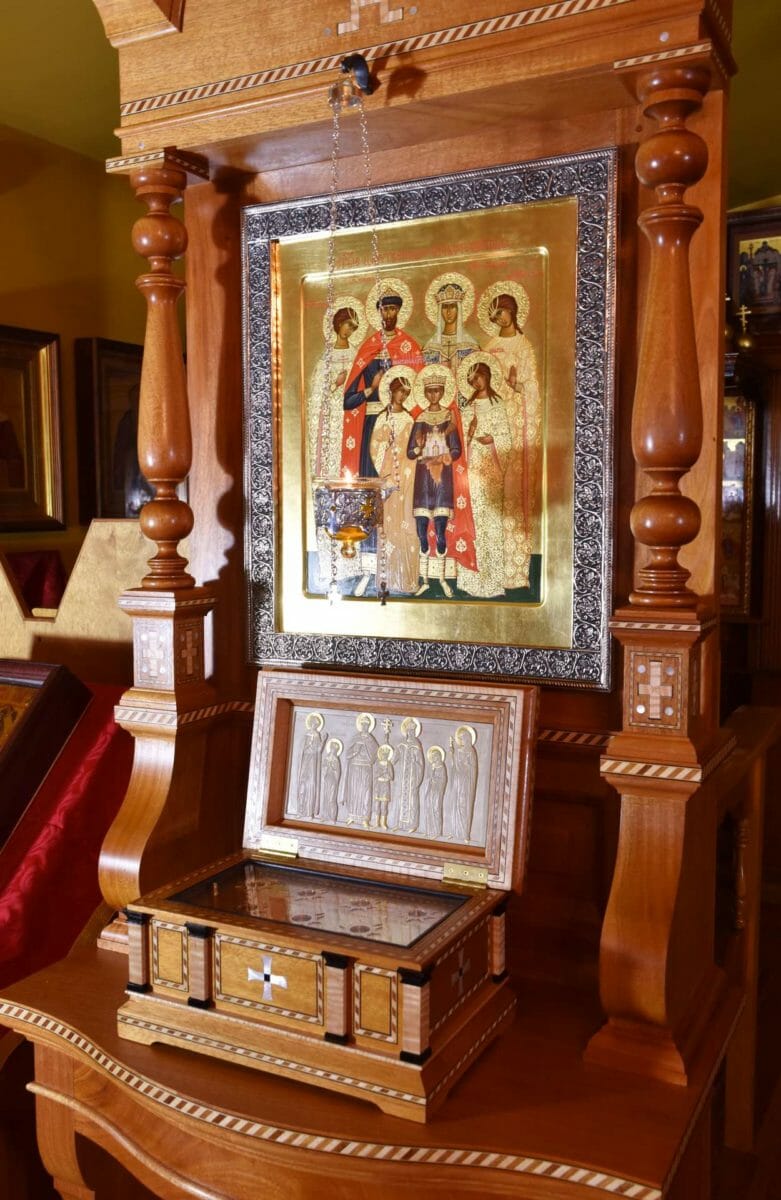
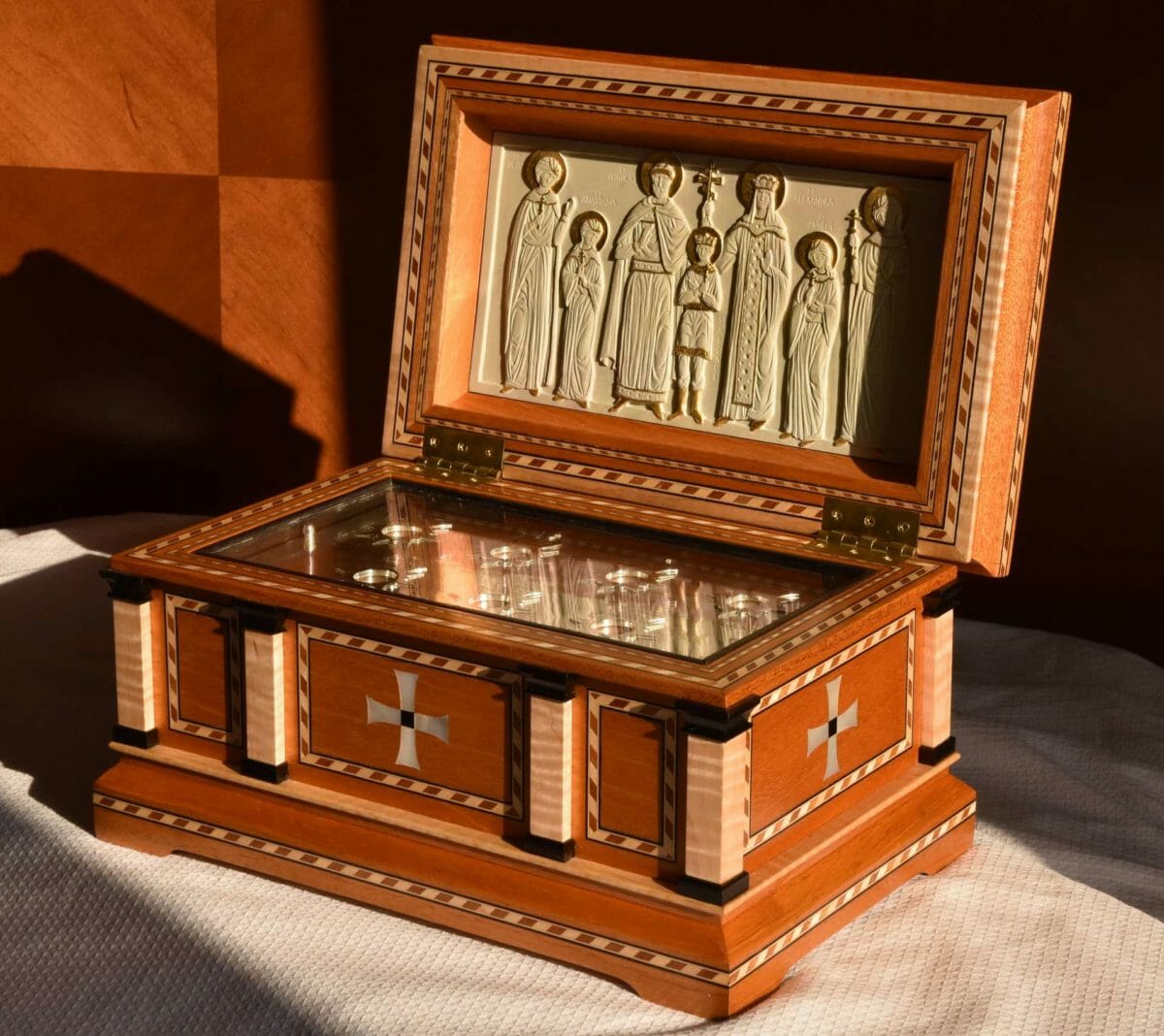
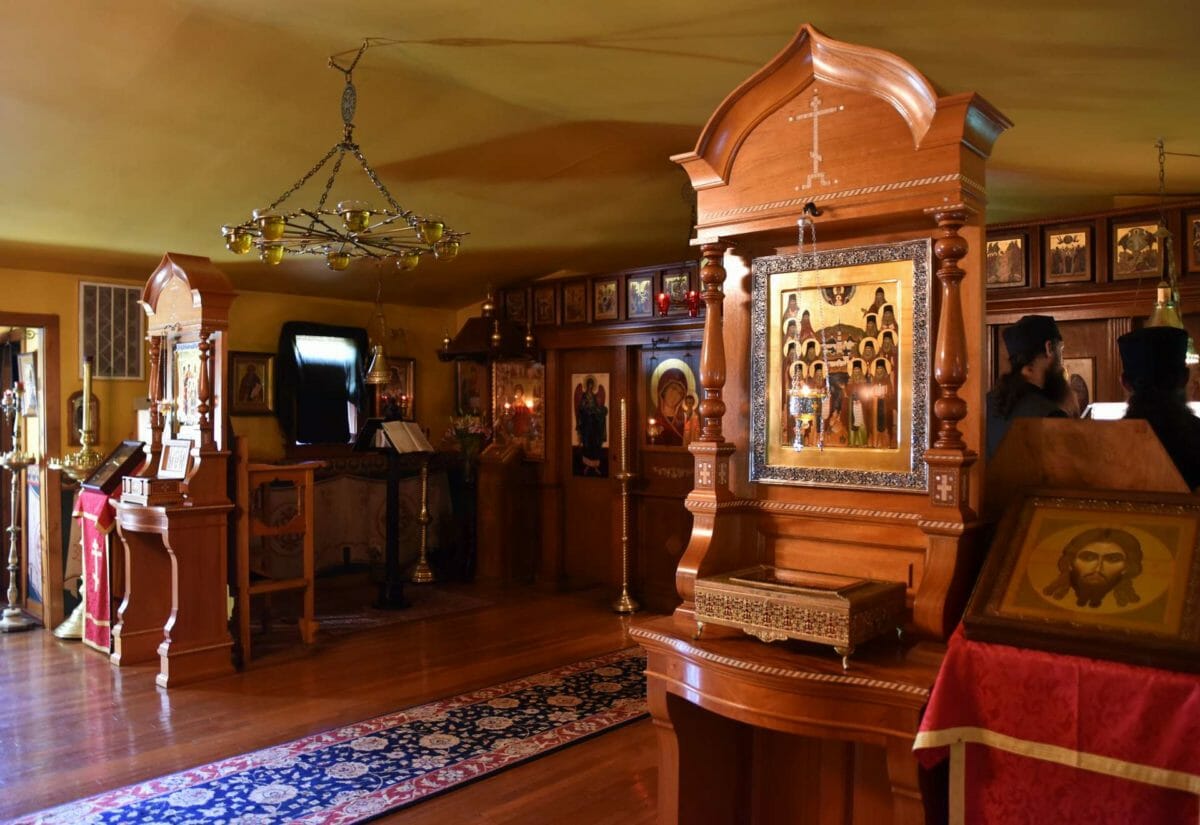
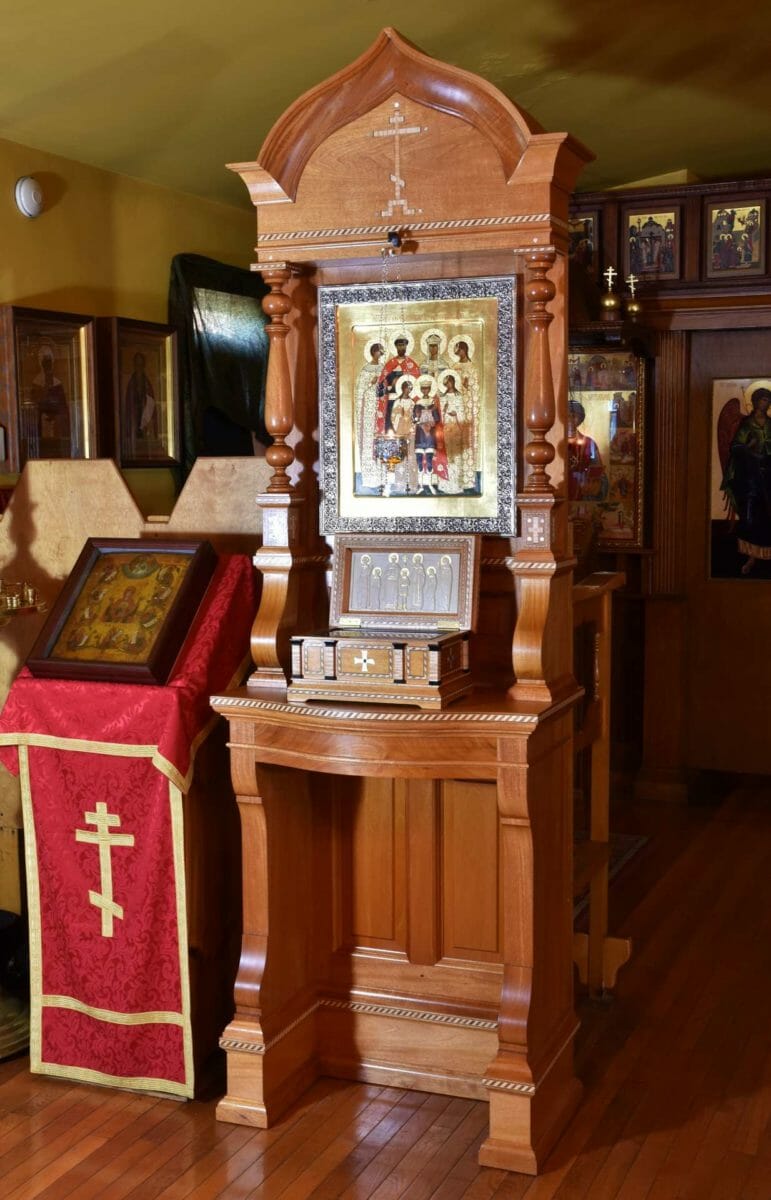
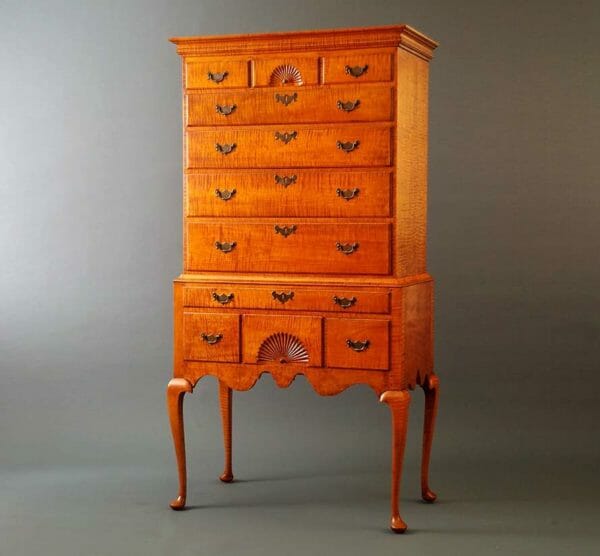
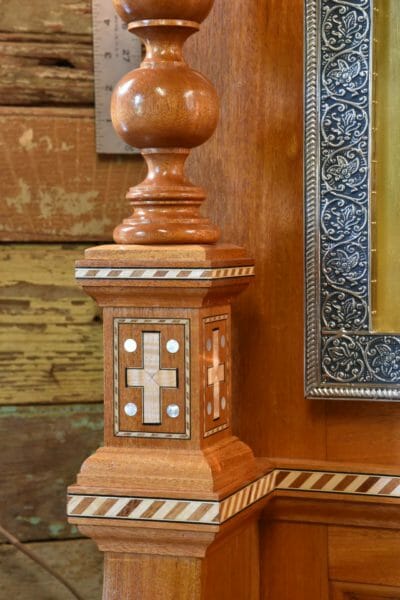
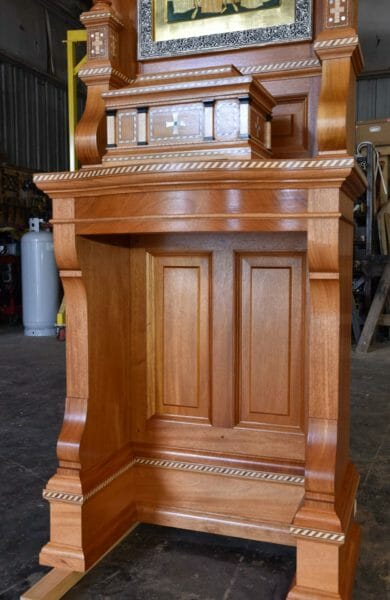
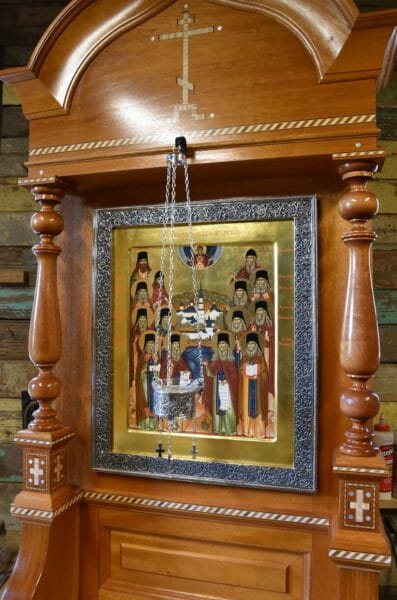
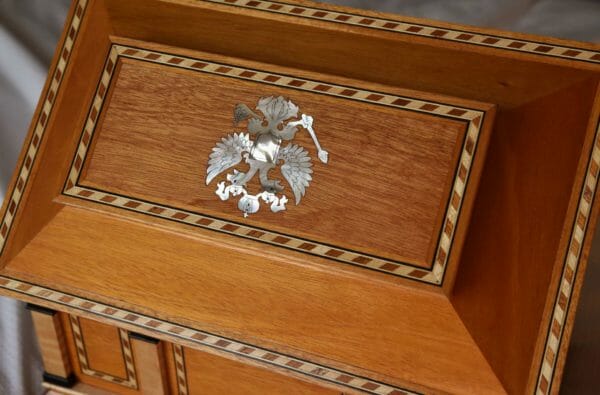
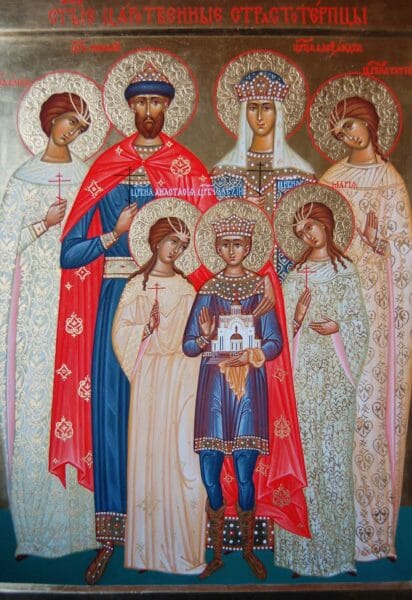
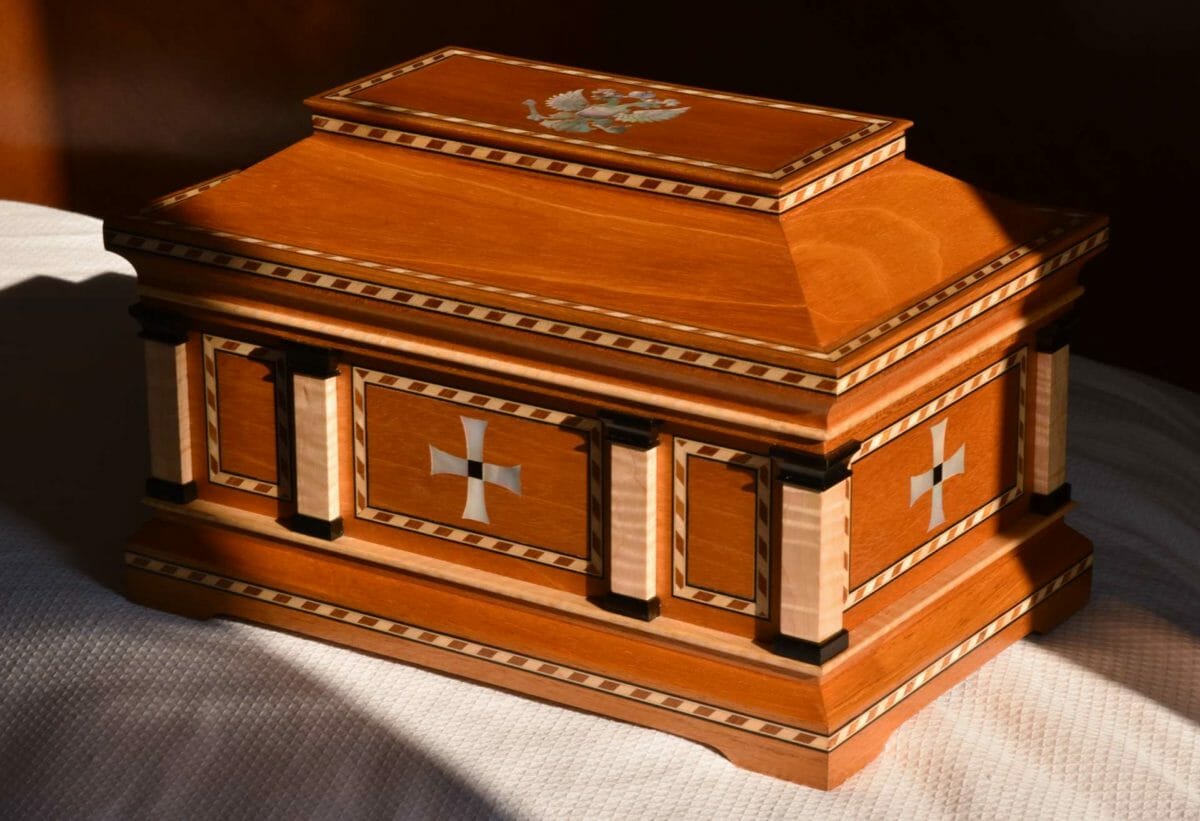
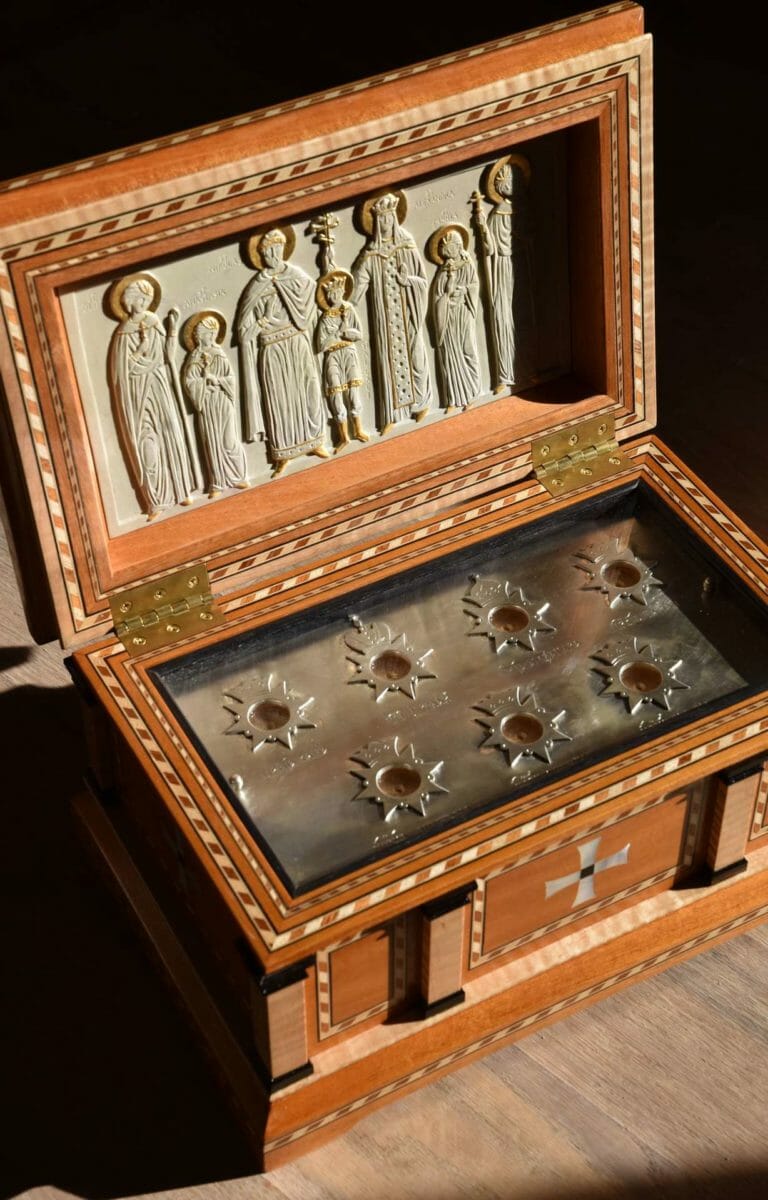
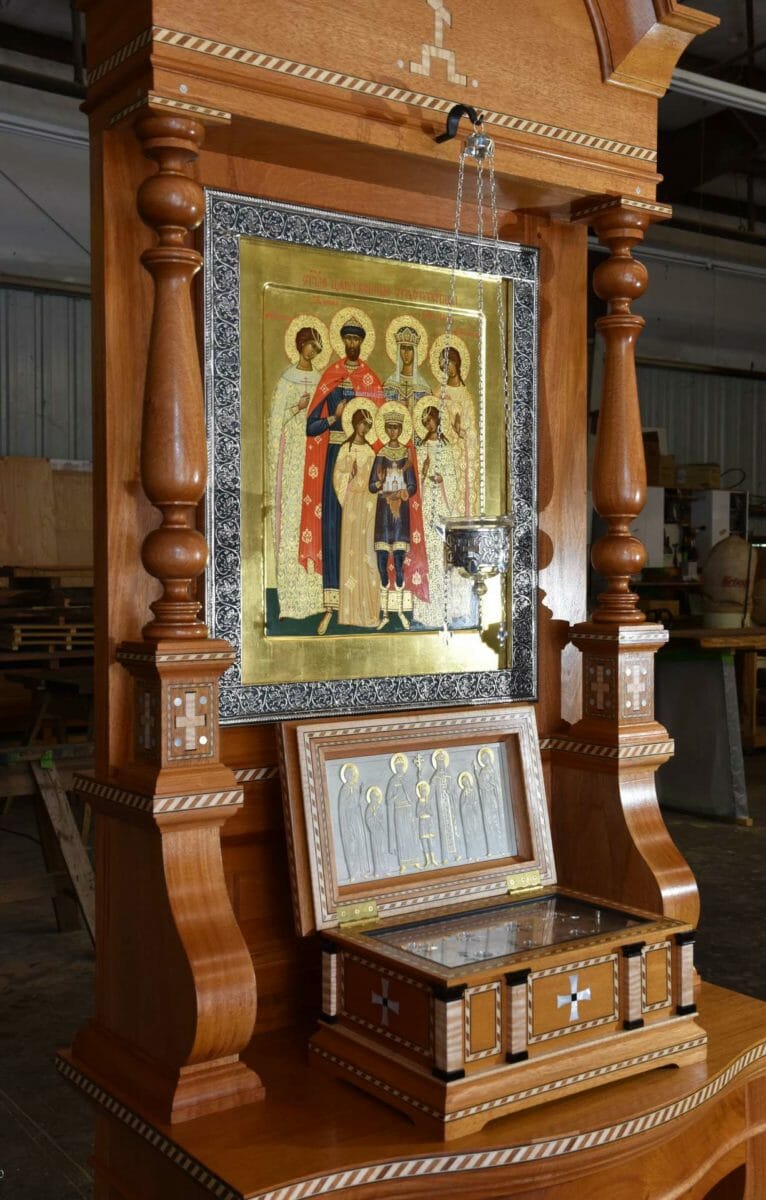
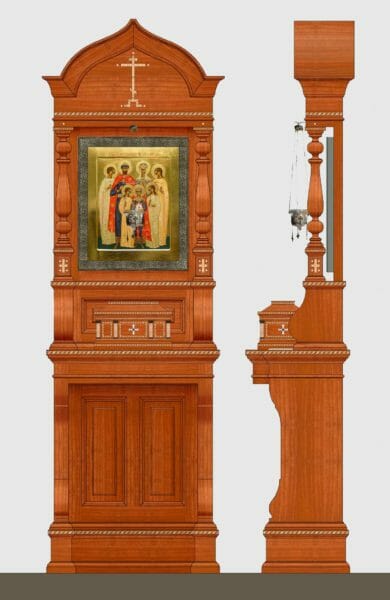
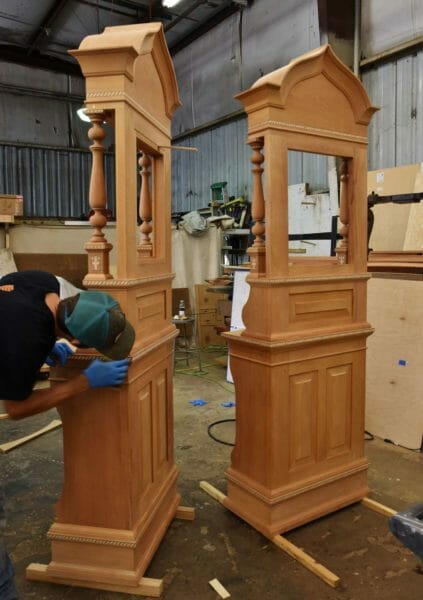
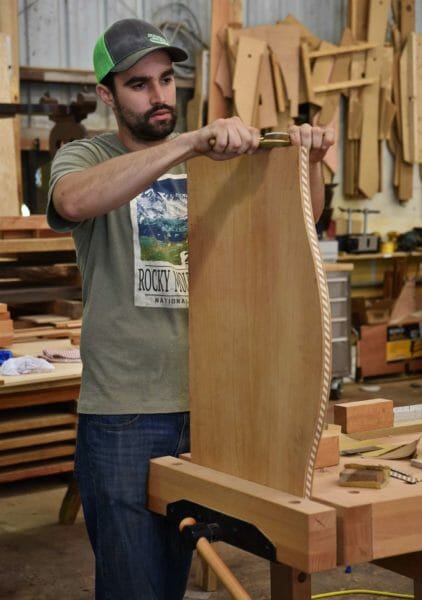
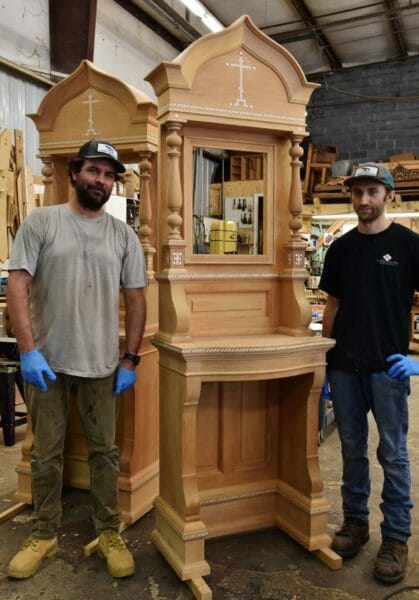
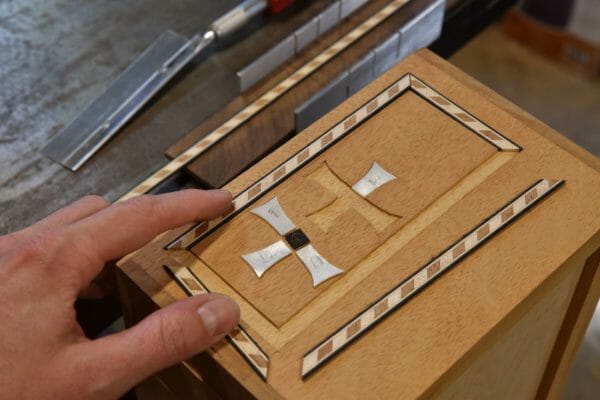
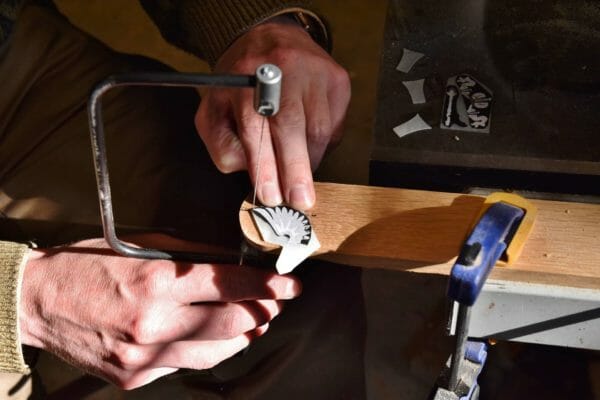
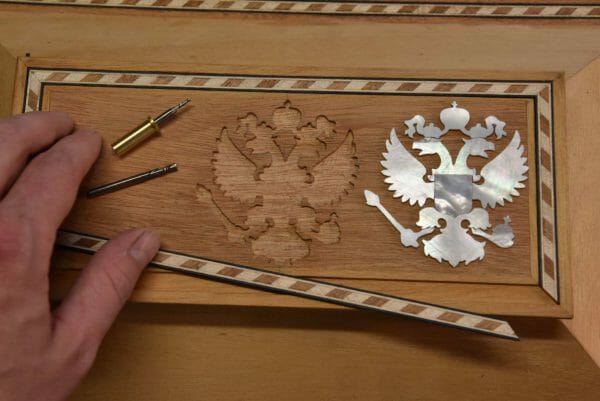
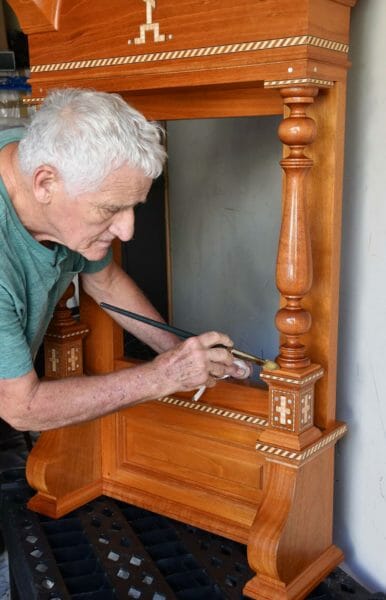
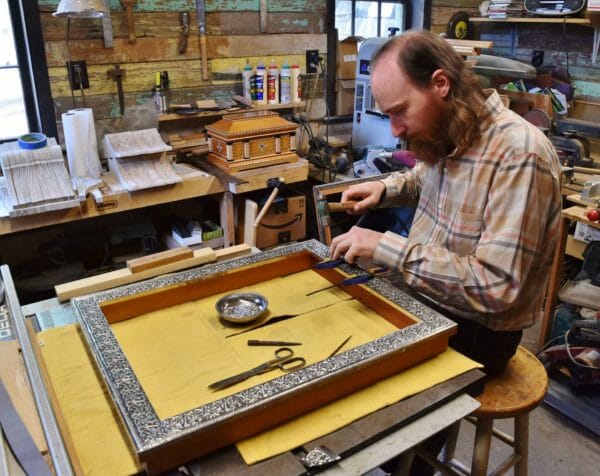
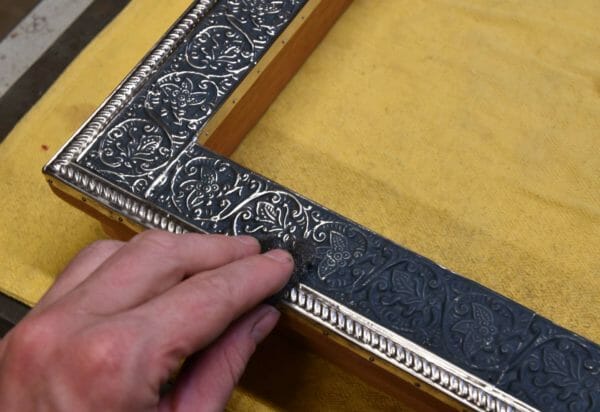
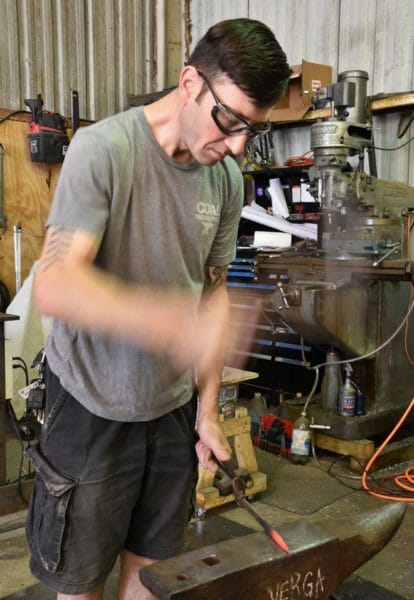
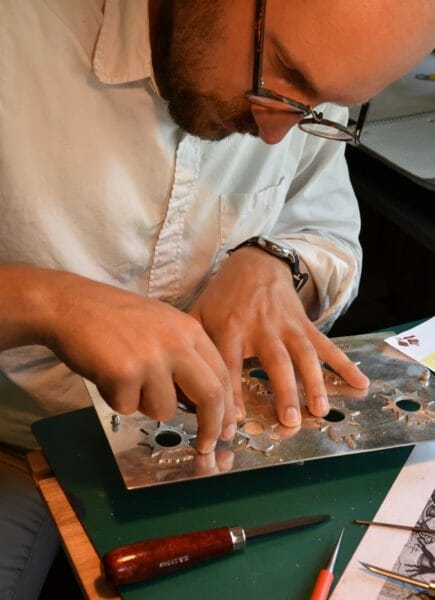
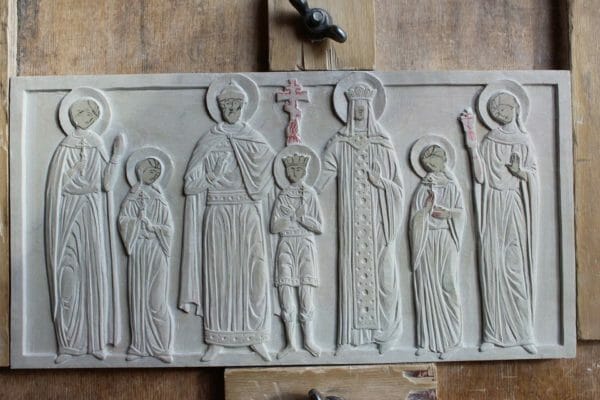
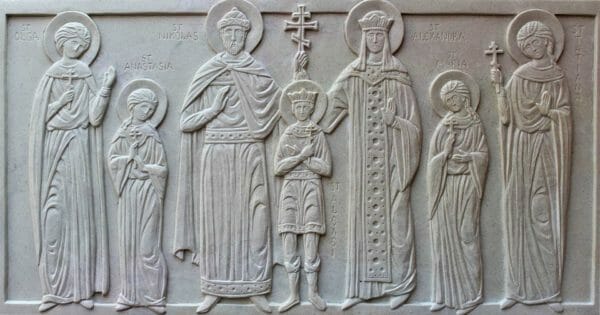
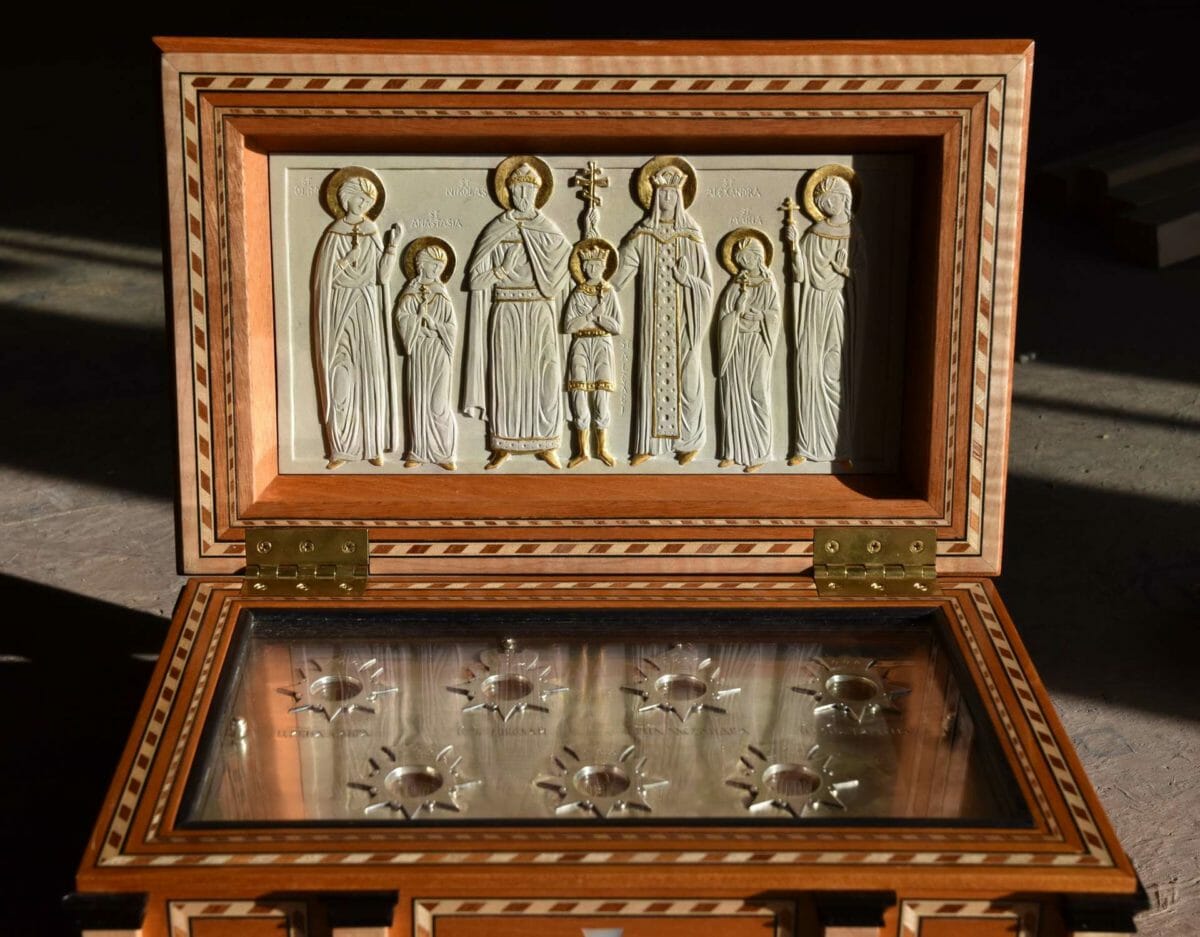
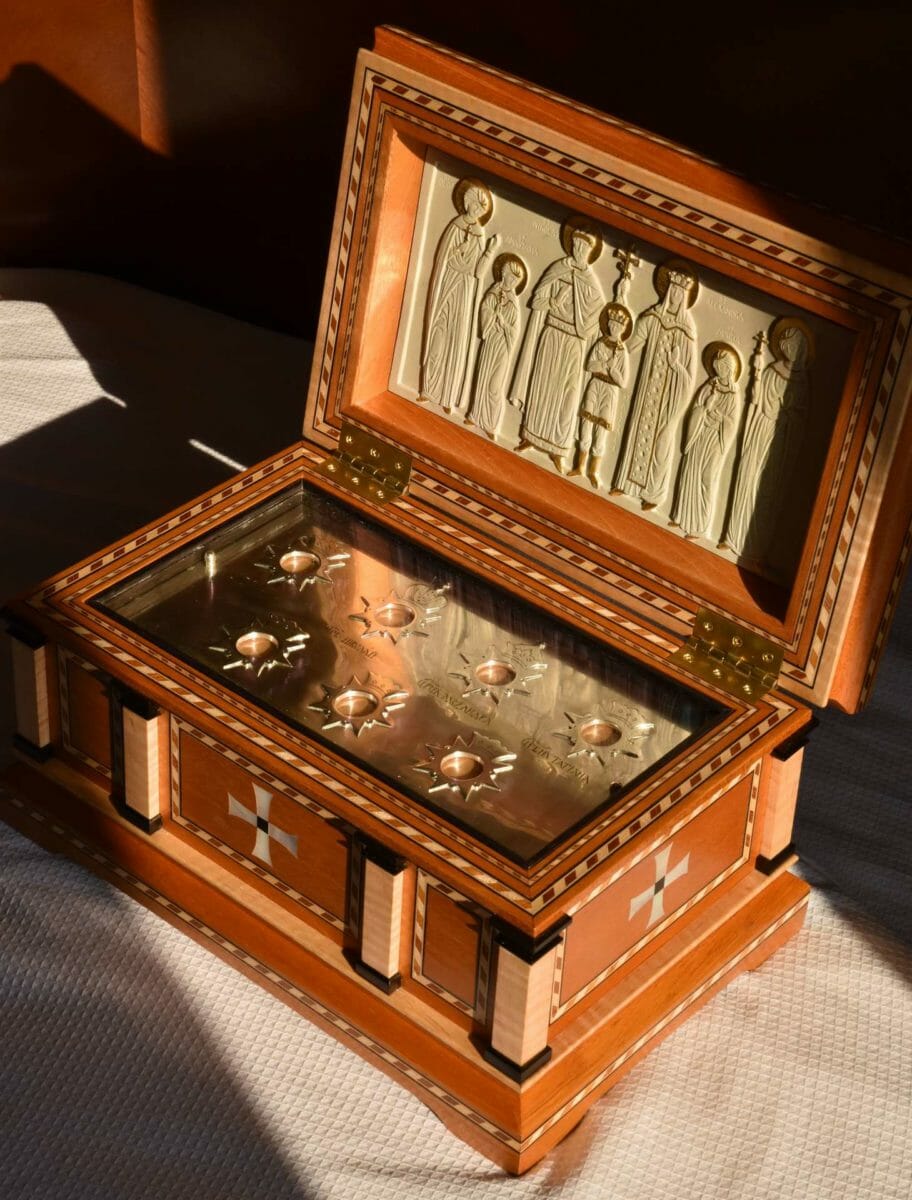
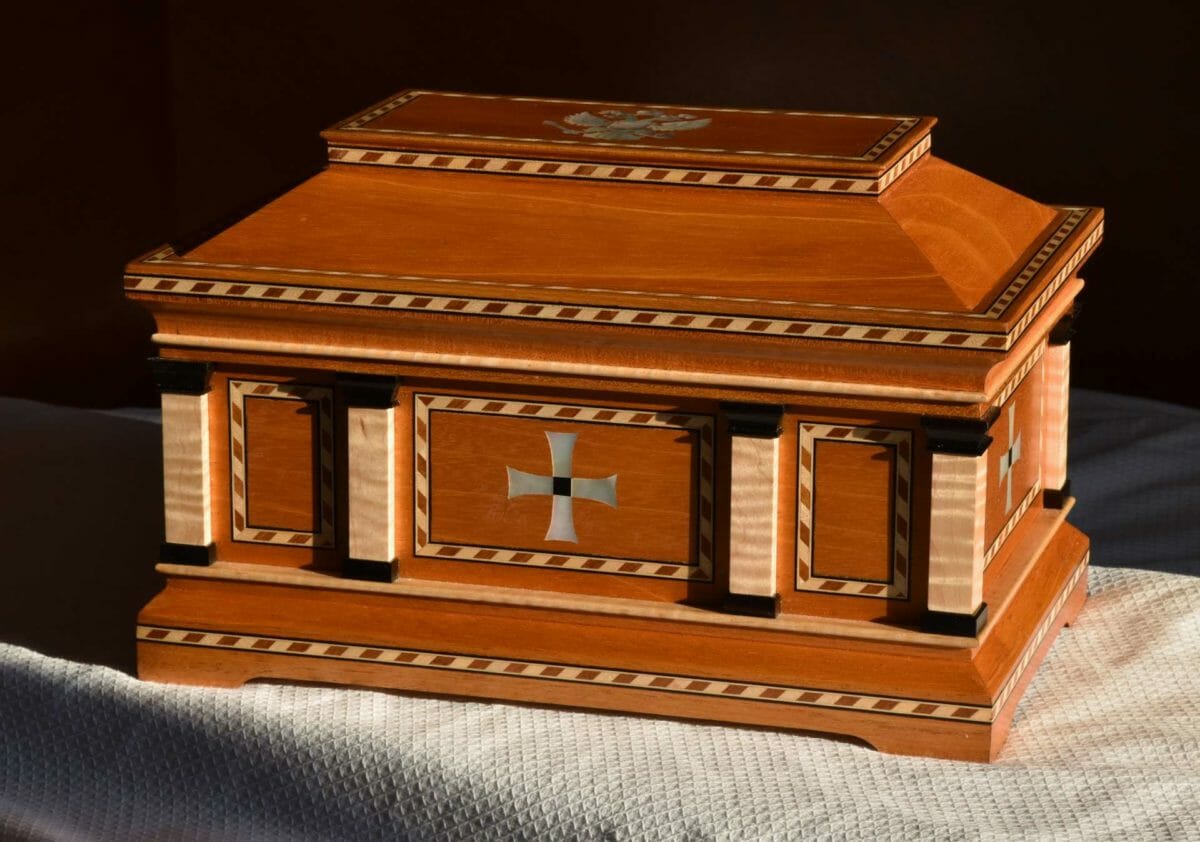
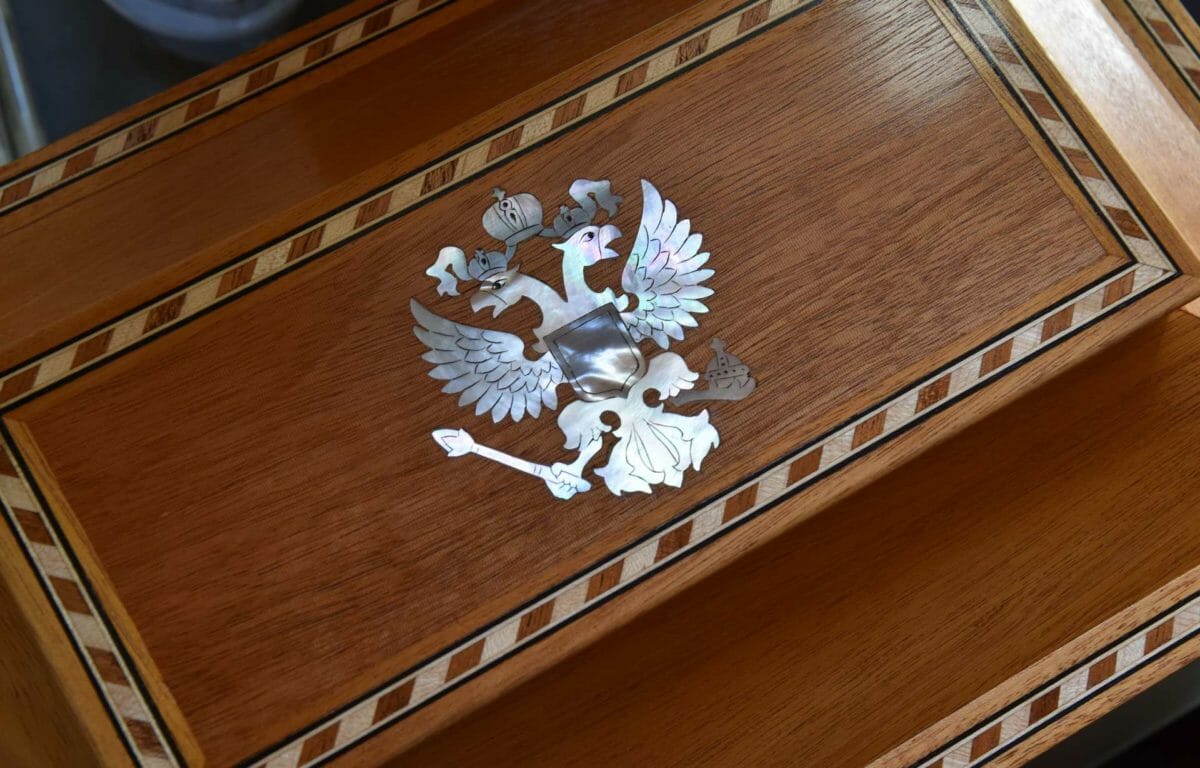
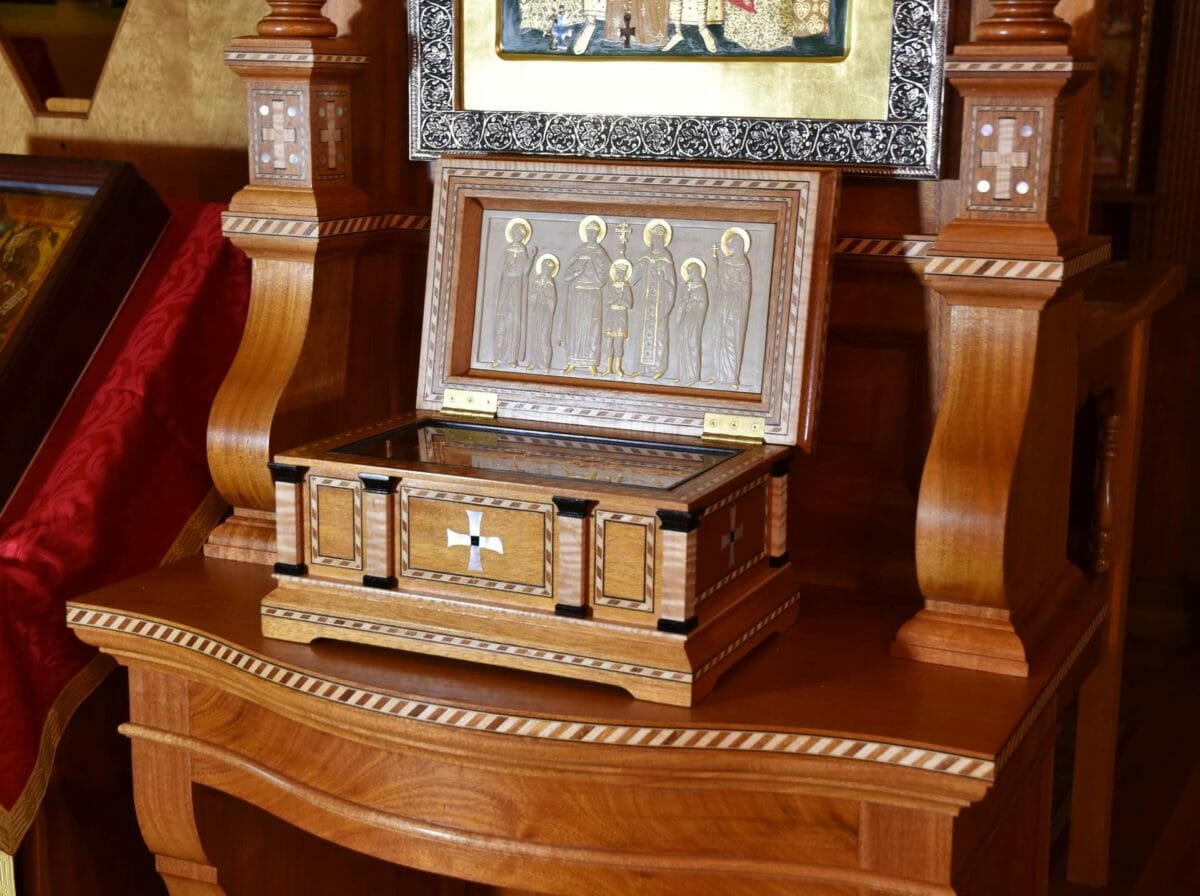
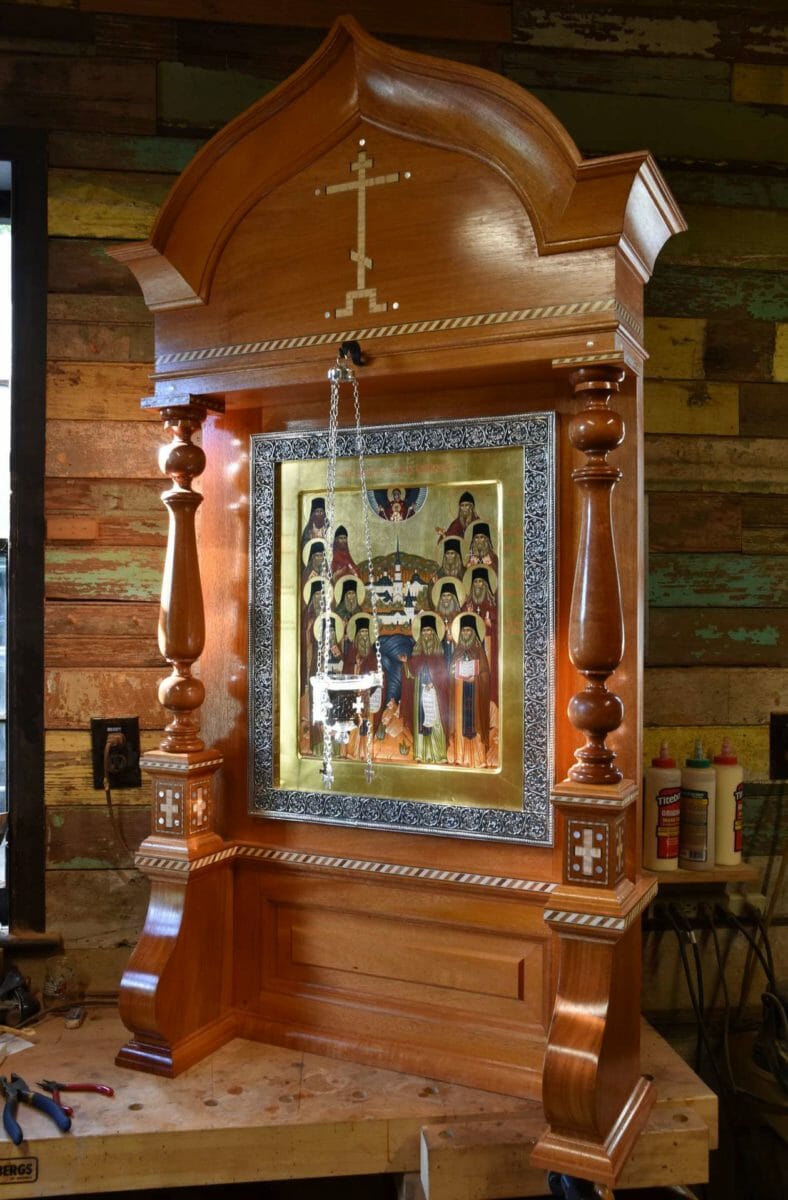
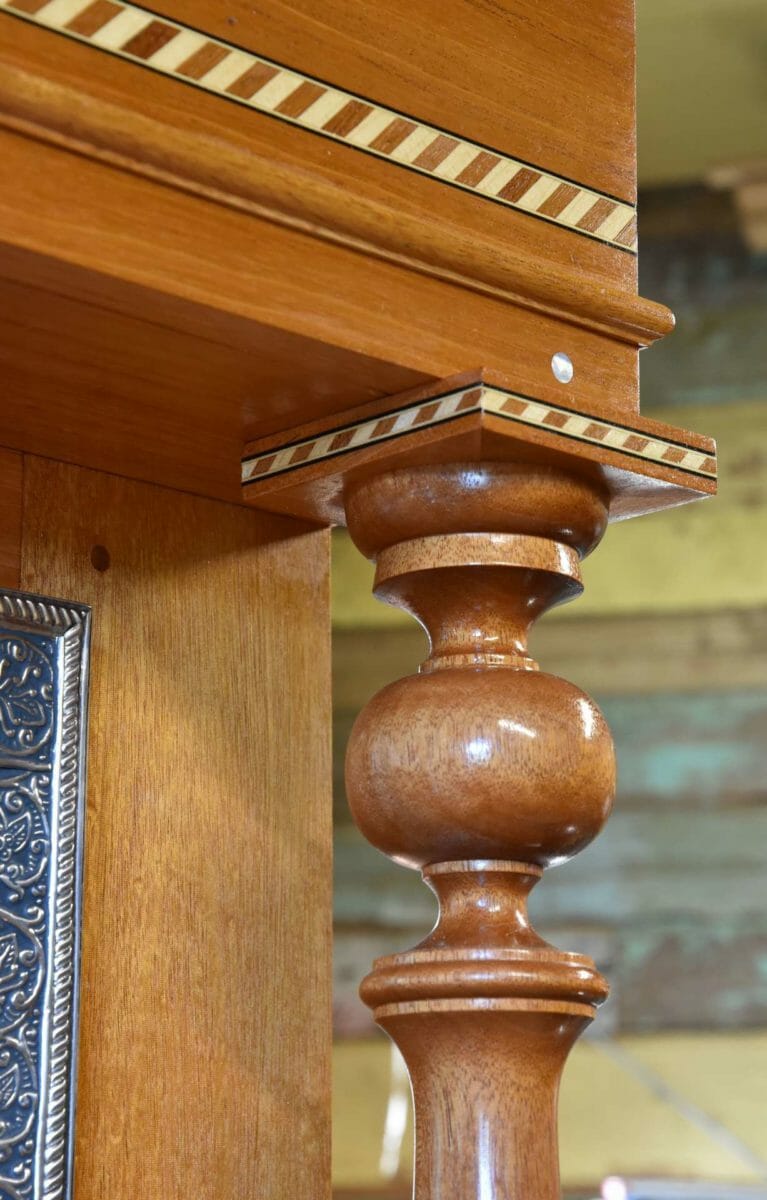
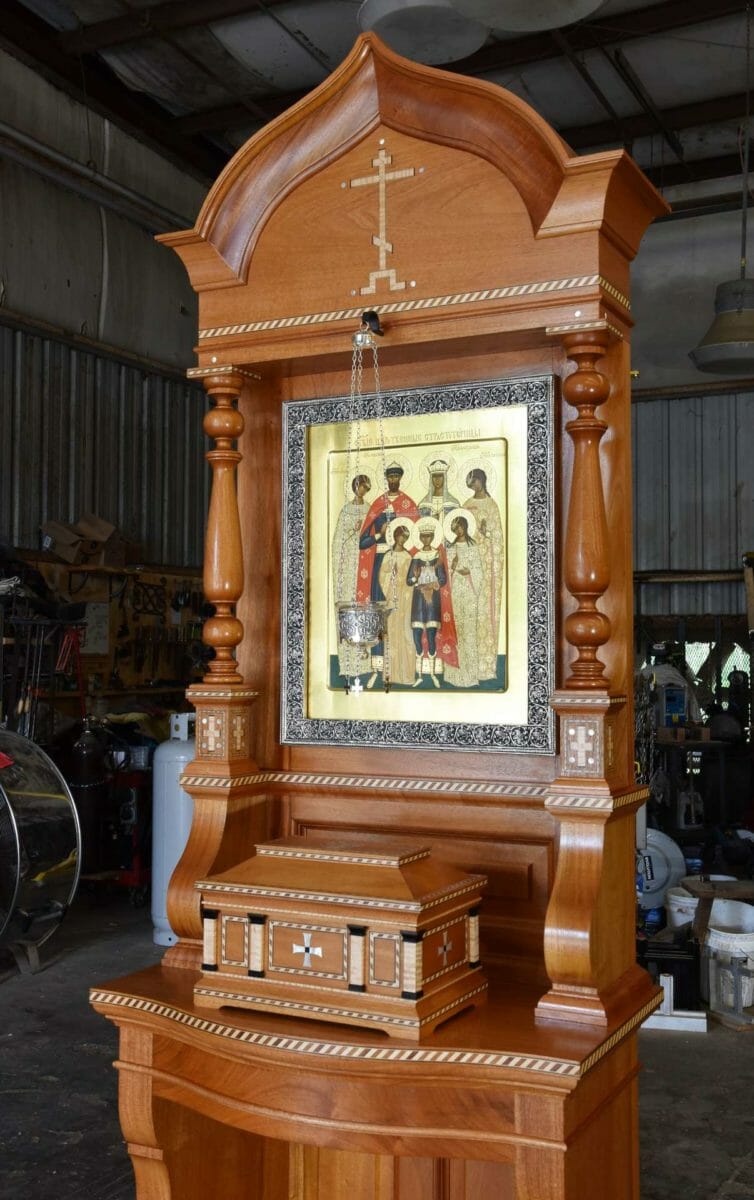
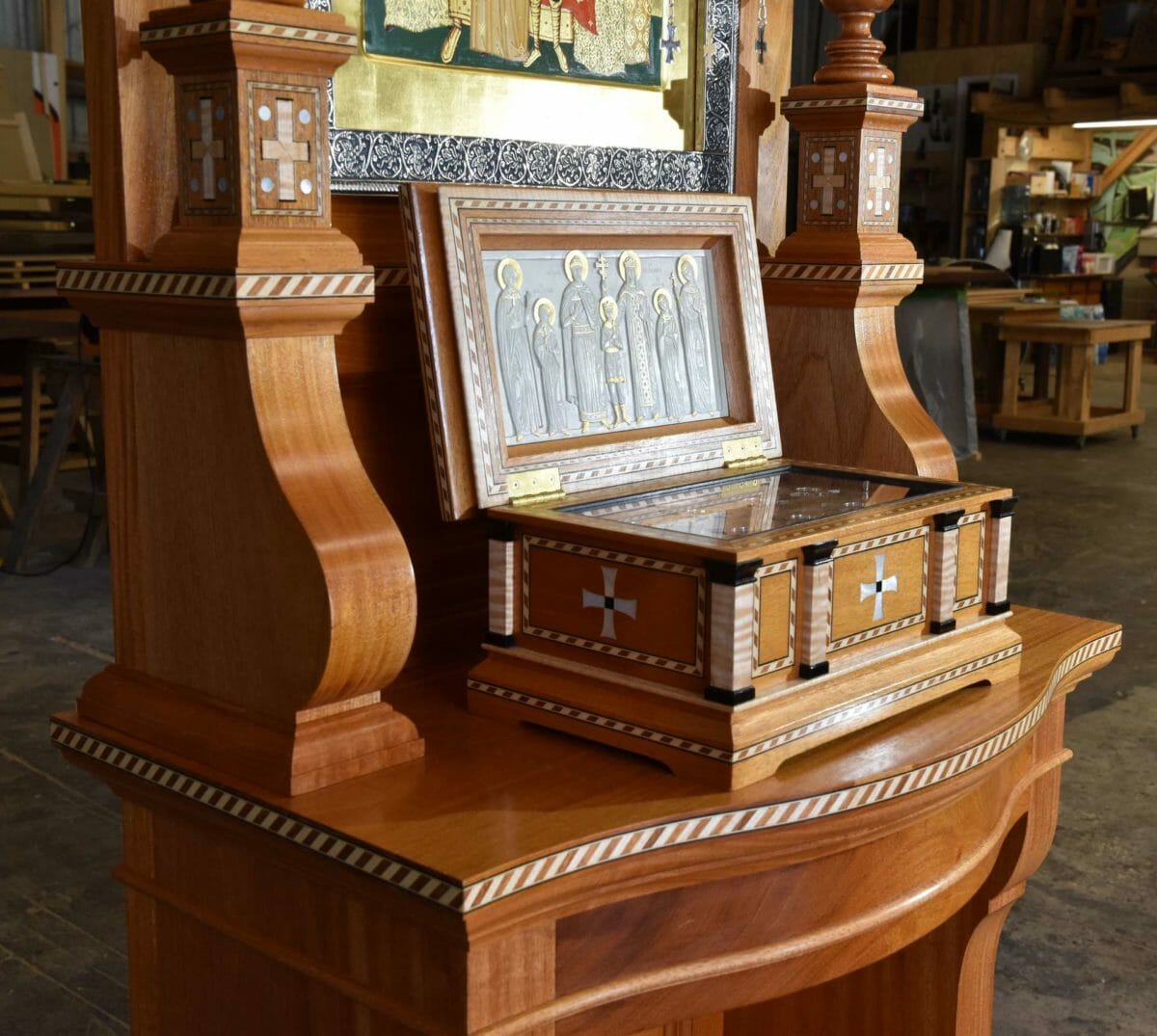
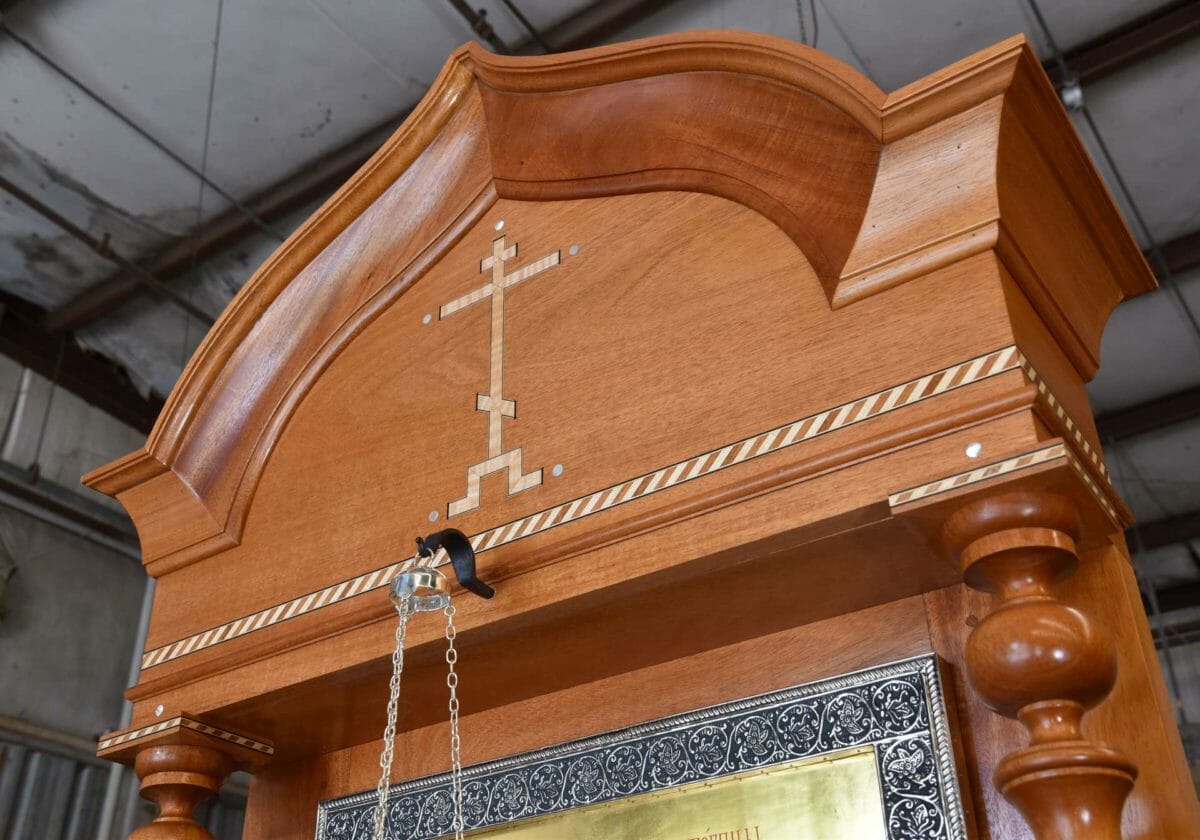
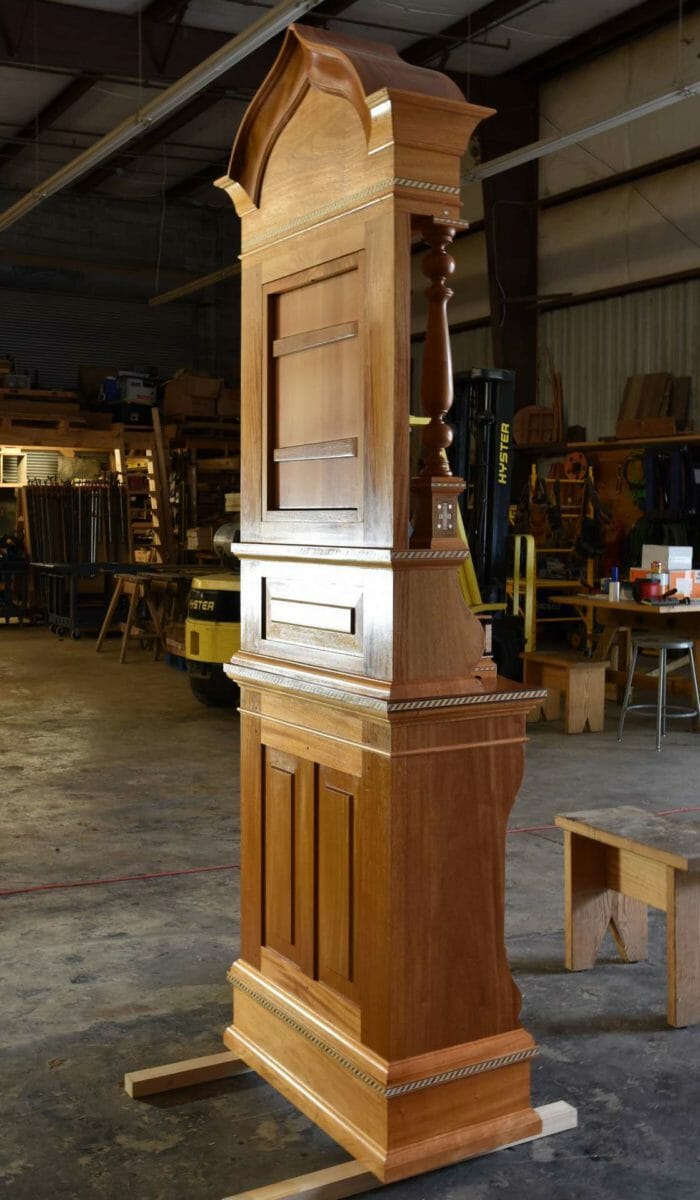
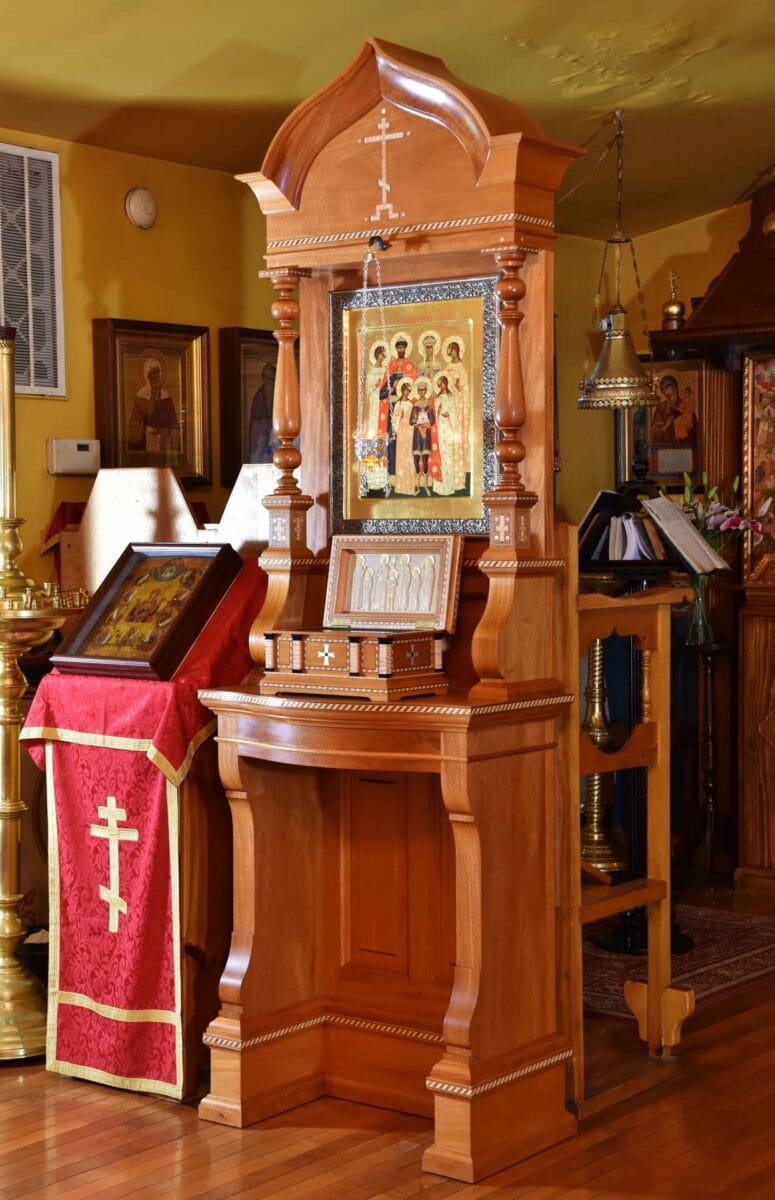
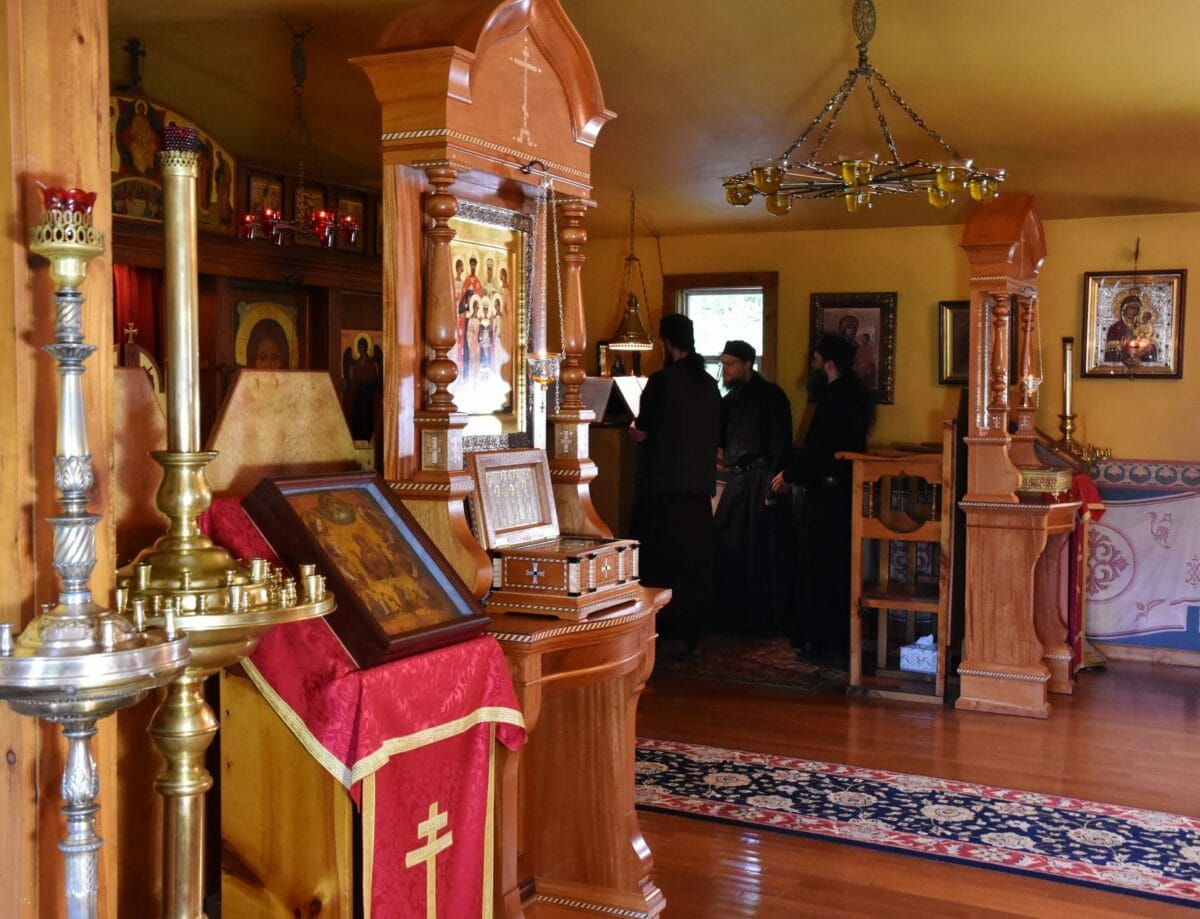
Exquisite!
Superb American artistry and craftsmanship at its finest. I look forward to venerating the icons and relics when I next visit Holy Cross.
This is really magnificent and an excellent read, as well. Thank you for sending this, as I am ever fascinated with all things Orthodox and icon. Have a blessed day!
It is so beautiful, especially the woodworking.
What a beautiful piece of fine craftsmanship to honor God ~ Truly breathtaking. Thank you for sharing the many photographs so we can all appreciate your intense labors. This is a tremendous blessing for us in America ~ We look forward to making a pilgrimage to venerate the Royal Martyrs. May your work always be favorable to God and His Saints!